How To Photograph Seascapes
![]()
Photographing the sea and the waves can be both challenging and fun. People often ask me what “the right settings” are to shoot moving water so I decided to write a little guide on it. There are many options depending on what look you’re going for. By using some examples of my own, I’ll explain how I shoot my seascapes.
Look and Feel
Now I like to create some ‘life’ in my images. I like them dynamic so I often go with the shutter speed of around 1-2 seconds. Why? Because I still get that ‘painting’ look I love myself, but I still get the movement of the water. The flow that creates the dynamics in an image is very important. It can also be used for compositions.
I don’t like very short shutter speeds (except for rare occasions when the sea is very dramatic), simply because the sea is often quite messy and with very short shutter speed it’s hard to create that painterly look I like. This is, of course, different for everyone, and I’m just stating my own style here. I sometimes love extremely long exposures too (30 seconds and up) to create that very smooth water surface. When you’re shooting with some objects in the foreground (like rocks for example) you can create that ‘misty’ look.
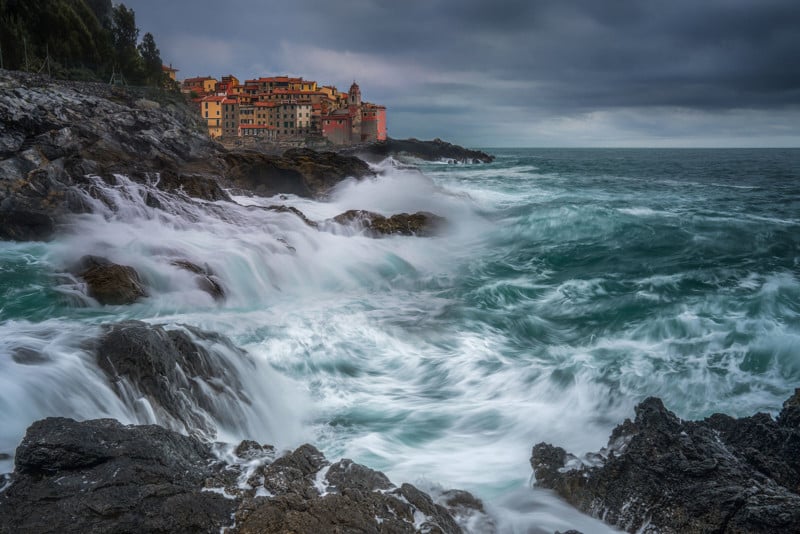
Settings
As mentioned above, for flowing waves and water I like to use a shutter speed of around 0.5-2 seconds depending on how fast the water is moving. I use Aperture priority with a closed down aperture of around f/14. I want a rather closed down aperture because I want a big focus plane. I want things in the foreground and background to be both in focus. I also use a closed down aperture because I want to create that longer shutter speed.
Use the lowest ISO available on your camera. If you have bright light during the day you’ll not be able to get a shutter speed of 0.5-2 seconds with just closing the aperture — you’ll need some filters. When the weather gets dark and moody, you may just be able to shoot without a filter because there is less light. When you want a really long exposure during the day, you’ll always need an ND (Neutral Density) filter.
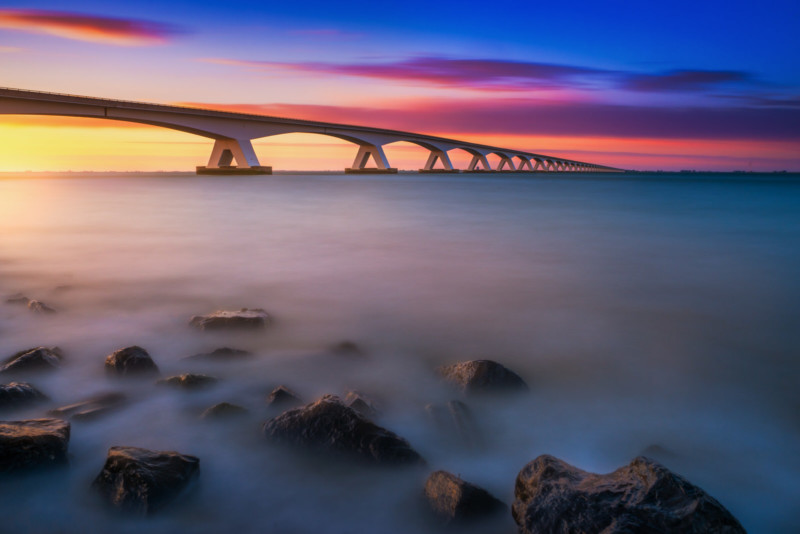
Filters
There are a wide variety of filters available. To slow down the shutter speed you will have to use ND filters. During daytime I mostly use a 4 or 6 stop filter to slow down the shutter speed just enough to get that silky look. If you want to use a very long shutter speed, you’ll need a 10 stop filter. The stops define how much light an ND filter will let through. The less light, the longer your shutter speed.
Think of it as sunglasses with different strength. You can also use ND graduated filters. These only darken the top of the frame (the sky) so that you can balance out your exposure. The most commonly used ND graduate filter is the 3 stops (often called 1.2 grad) I often use an ND graduated filter together with a full ND filter (4-6 stops, or 10 for very long exposures).
Another filter that is very useful for shooting water and the sea is the CPL (circular polarized) filter. With the CPL filter you can control the reflections and glare on the water. Sometimes you get those nasty highlights on the water that you want to get rid of. That’s where the CPL comes in. By turning it you can control the amount of reflection on the water.
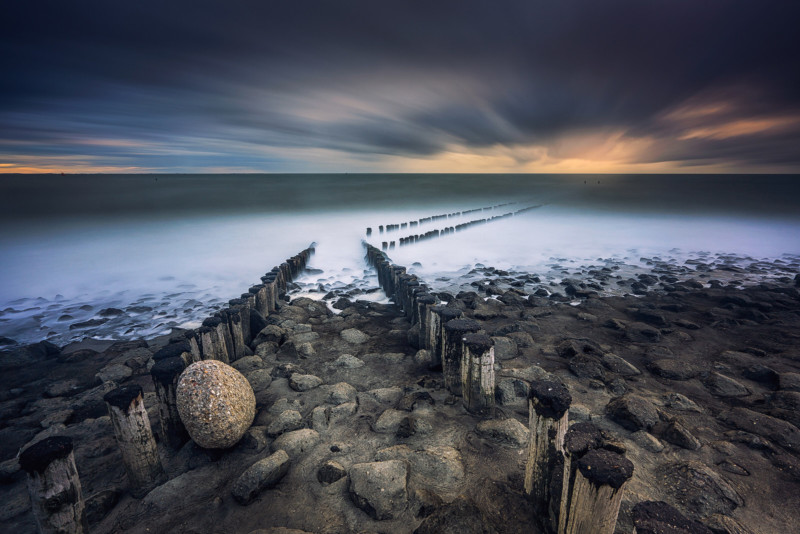
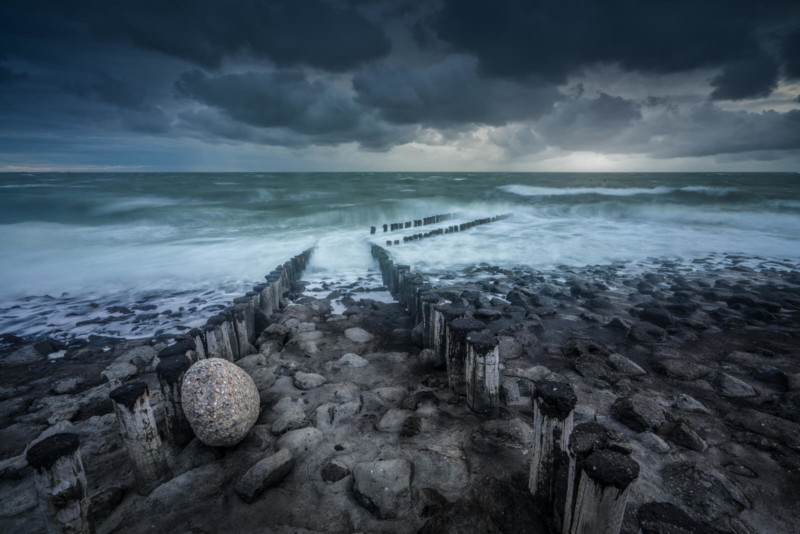
Timing
If you’re all set up with the right settings, it’s time to shoot! When want to shoot moving waves timing is crucial. Waves come in and pull back, and hitting the shutter button at the right time is essential. Using a remote for this is recommended, as you don’t want to be touching your camera when shooting longer exposures as your shot might get blurry from you touching the camera.
I like to control timing myself, but another option is to shoot in burst/continuous mode on your camera. You can just keep shooting all the time and hope you get a nice wave in your shot. The downside of this is that you will get lots of files to go through later and also the timing is not super precise.
![]()
Now let me explain how I shoot waves in action. I pick a composition and set up my camera settings. Depending on the scenery I wait for the right moment and press the shutter. The right moment is often when the water or sea pulls BACK, not when it’s incoming. When it pulls back you get that white foam pulling back into the sea creating beautiful leading lines in your image.
When you have rocks in the foreground and you want water splashing over them, shoot when the water is incoming. But the trick is often to wait until the water pulls back and then press the shutter button. I keep doing this until I see an image on my display that I like. Then I move on to another composition. I try different shutter speeds from 0.5-2 seconds depending on how rough the water is to see what looks best. Just experiment.
Compositions
Some tips on compositions with water:
- Use flowing water as a leading line through the middle or corners.
- Put your camera very low to the sea to get close up to the action. But be very careful about rogue waves that might hit your camera. Saltwater on your camera often means death.
- When using very long exposures, use objects in the foreground to create depth in your shot
- When you find your composition, try all kinds of shutter speeds. Very short, 0.5-2 seconds, and 30 seconds. See what looks best.
- Try to use objects like rocks in the foreground to use for splashing water, or flowing water around.
You can use waves on its own to create a photo out of completely nothing. Sometimes a single wave on its own can look amazing, without anything else. Just keep shooting to try and catch that perfect wave.
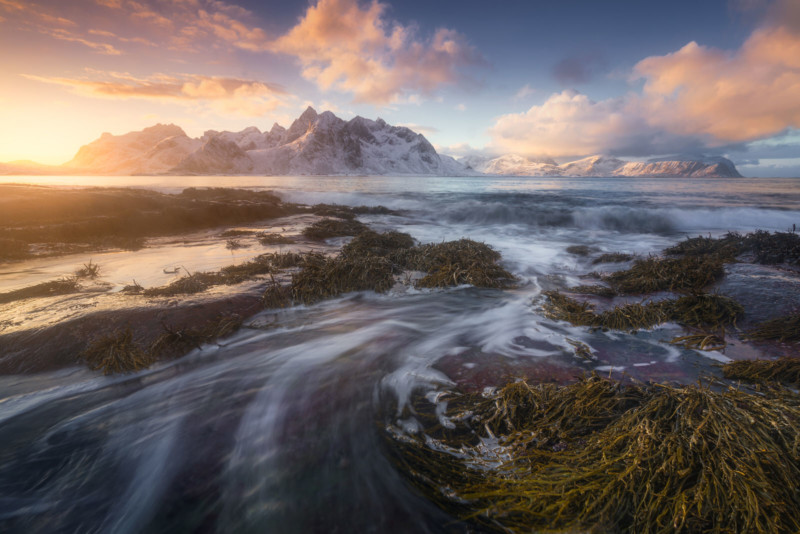
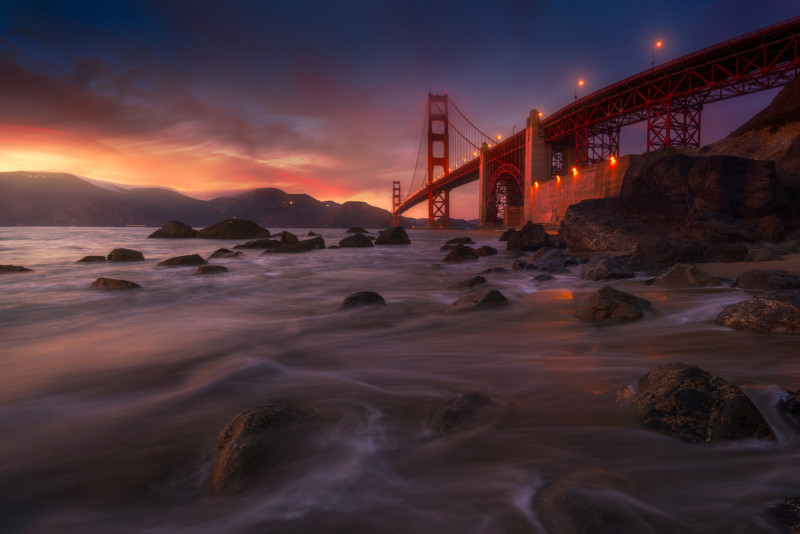
Have Fun, But Watch Out!
Shooting seascapes can be great fun. I can spend hours shooting the same location by just trying to get that perfect wave in my shot. Make sure you wear boots and waterproof pants if you’re going to stand in the waves. Be careful on rough seas and beaches that are known for rogue waves. Also, be very careful that waves are not hitting your camera. Salt water is NOT good! There are cheap rain covers available for cameras that you can use to protect your camera. I have seen many cameras die in the sea (and I have had one death myself). So be careful!
About the author: Albert Dros is a 31-year-old award-winning Dutch photographer. His work has been published by some of the world’s biggest media channels, including TIME, The Huffington Post, The Daily Mail, and National Geographic. You can find more of his work on his website, or by following him on Facebook and Instagram. This article was also published here.